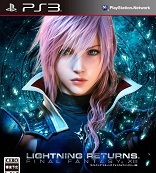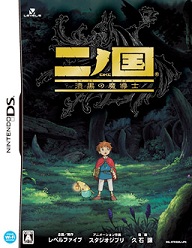Heroes of Mana
Nintendo DS
Reviewed: 10/27/2007
 Heroes of Mana, the third game to be released in North America in the World of Mana compilation, was a chance for the Mana series to start to once again meet the standards created by the earliest entries. Unfortunately, it ultimately fails to live up to those standards. Styled after a real-time strategy game, Heroes of Mana is a departure from a typical Mana game, but this is not why it fails. Rather, each element in the game encounters a problem or snag, wearing down on the player. The first of these is a weakened story.
Heroes of Mana, the third game to be released in North America in the World of Mana compilation, was a chance for the Mana series to start to once again meet the standards created by the earliest entries. Unfortunately, it ultimately fails to live up to those standards. Styled after a real-time strategy game, Heroes of Mana is a departure from a typical Mana game, but this is not why it fails. Rather, each element in the game encounters a problem or snag, wearing down on the player. The first of these is a weakened story.
The problem with Heroes of Mana‘s story isn’t so much the premise as poor execution. The game stars Roget, a soldier of the nation of Pedda, with various squad members, under his captain Yurchael, aboard The Nightswan. The crew witnesses their own nation occupy the Ferolian nation and its capital Lowenburg while they themselves are on a reconnaisance mission. Realizing that they were used as decoys, they vow to find out why Pedda is slowly conquering nations of the world and placing destructive artifacts called Black Mirrors. Obviously, some evil political figures are involved, and having the Nightswan gang travelling the world, trying to keep ahead of their own nation where they are now marked as traitors, has a lot of story potential.
Where the premise is ruined is the bland, useless characters and uninspiring script. It becomes hard to really care about Roget and Yurchael’s relationships with various Peddan figures, as events are dispensed briefly and poorly, and characters with no real reason to fight reappear constantly and inexplicably for battle…again and again. The other three Nightswan crew members may as well have not had names: their weak personalities, backstories, and script contributions actually distract from the more meaningful dialogue boxes of other key characters. Fortunately, some characters from other kingdoms, such as Valda and Falcon, fare a bit better than the Peddan cast, but that doesn’t prevent the plot from becoming boring. A double disappointment is in store for fans of Seiken Densetsu 3, who will only find passing references to the original game in this prequel aside from the world itself. In fact, Heroes of Mana actually confuses the events of Seiken Densetsu 3, rather than supports them.
Heroes of Mana‘s chapters will all play out in a similar fashion. Players will get a chance to outfit their characters and consult various menus, and then may advance to their next mission, where they will encounter some brief introductory story, followed by a battle. Battles will often have changing victory or loss conditions as they occur in several stages, with story interspersed between events in battle, such as a character being defeated or troops moving to a certain location. The win conditions are acceptably varied, occasionally including one or more ways to succeed, such as sinking an enemy ship, defeating a character, reaching a map location or protecting a character; the loss conditions are less varied, as one can expect to see that on any given map, losing Roget or the Nightswan will spell game over.
 |
| The Borledoon battleship, aka the Great Desert Whale. |
Battles proceed in a simplified RTS fashion: build a Gatherer base, gather resources, build troop bases, summon troops, kill things. All of these activities take place within the Nightswan, which may be moved freely around the map and anchored at special points to perform building structures and summoning of troops. Units come in four varieties that function on a weakness/strength loop: ground beats missile beats flying beats heavy beats ground. Stronger units of each type are obtained through story progression. There is an additional designation of special units that are not always intended for combat, such as Molebears for spying through the fog of war. Other structures can aid the troops, such as the Healing House, and as the story progresses, altars may be built to summon Benevodons in battle and tear through all opponents on the field.
The single biggest flaw in the gameplay system is that battles are grid-based, as nearly every other flaw can be traced back to the fact that units are being forced into arbitrary squares and lines. Since no two units can occupy the same square, two squares are in effect “occupied” as one unit moves from one square to the next, friendly units can not pass through each other, and units can not move diagonally, manipulating units becomes one of the most cumbersome tasks in the game. Units summoned from the Nightswan will be placed around the ship and often lock other troops out while being unable to move themselves, creating large pile-ups. Ally characters will clog narrow paths and corridors, much like french fries clog arteries. Unfortunately, in real-time strategy games, speed in creating and dispatching units is essential to victory, and Heroes of Mana is no different. A lot of game overs can be attributed to poor unit management, through no fault of the player.
Ally AI does more to hinder than help the situation. Rather than have two ally paths potentially intersect, units will often break off from the group they’re moving in and take the longest possible way around. If a group is selected to move to a particular square, once the first unit occupies that square, the others will constantly walk back and forth trying to reach an unattainable square, even if they are being showered with enemy attacks. Selecting a unit to attack is difficult because one must select the square that foe is standing on, and once that foe moves, allies will continue to surge towards the original spot, heedless of other circumstances, and seemingly unable to detect nearby enemies. While moving units rarely take notice of foes, stationary ally units will conversely drop their position at will to go charging after an enemy, often one at a time.
 |
| Only one spell can be equipped per character, so pick wisely. Pro-tip: give this guy healing so you don’t lose. |
The worst part is that most of these awkward problems seem as though they could be entirely eliminated by scrapping the grid. Square Enix is already proving that the DS itself is more than capable of handling gridless RTS combat. Heroes of Mana could have benefitted from such a design change and still retained much of its core gameplay and feel. It really is a shame that the game is instead shackled with such damning flaws in the gameplay’s structure.
Heroes of Mana contains approximately 30 main missions, along with a bonus mission for each map once it has been cleared, so players can expect to get at least 30 hours of play from the cartridge if they choose to see it to the end. Multi-cart play is also supported, and players can compete in the Wi-Fi player rankings. Other than this, there is not much offered to entice players to play through the game again, except to redo the story missions for whatever reason.
Other than the pretty animated sequence upon starting up the game, Heroes of Mana has little in the way of impressive graphics or sound. Other animated cutscenes are present, and do look fine, but add very little to the experience. The environments are well colored, but they, along with the world map, have a grainy, pixellated look to them. Sprites are tiny and cramped looking, possibly because of the need to fit creatures into grids, but are passable. Story cutscenes do feature stationary character portraits and backgrounds, which again, look fine, but fail to leave a lasting impression. Sound effects are minorly irritating, and seem to deviate from what sound they were actually intended to portray, sounding rather tinny. The music, aside from the aforementioned opening track, is astonishingly bland. Though it is composed by Yoko Shimomura, the one responsible for Legend of Mana‘s beautiful soundtrack, the tunes are dull and uninspiring, often boasting a mechanical sort of sound. Few songs, if any, are memorable, and some are downright irritating. Furthermore, the score lacks a coherent theme to base itself around, not even borrowing from some of the more famous melodies in the Mana series.
Overall, Heroes of Mana is not a horrible game, but its gameplay flaws are crippling to the point where it might even give fans of the series pause. The cumbersome battle system and poor AI make progressing through the game an artificially difficult chore, while the unrewarding plot and average graphics and musical score give little reason to struggle to complete it. Determined fans may find something within to justify their purchase, but overall, Heroes of Mana comes up short of what fans have expected out of the Mana series–expectations which may soon start to wane.
-Janelle Hindman
| Score Breakdown | ||
| Overall Bad Out of 10 See our Review Criteria |
Gameplay | Bad |
| Story | Below Average | |
| Graphics | Average | |
| Sound/Music | Below Average | |
| Replay Value | Below Average | |
| The Verdict: 3 | ||








